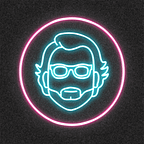Decentralized Umoja Bounty Hack
Bonding Curve Sale
Meet the Team
Paul and Timothy Ogwulumba are twin brothers from Nigeria competing in the Decentralized Umoja Bounty Hack. For their project, Team Ogwulumba is building a bonding curve app on Algorand. You can learn more about their project in the video below and vote for the team to receive the Community Choice Award following Demo Day on December 17.
Tell us about your backgrounds as developers!
During the lockdown last year, we decided to learn web development. So we learned HTML, CSS, JavaScript, React, PHP; in fact, we’re full-stack web developers. Before then, we did a bit of Java and a bit of CSS. So, because we also played volleyball professionally for Nigeria, it was kind of difficult balancing being developers and being sportsmen. So we had been dabbling in it off and on. When we got back from playing in a competition in Iran a few months ago, we decided to go full-time as developers and put volleyball aside.
We’ve always been interested in blockchain development and we wanted to get our hands dirty on a project. That’s when we learned about the Decentralized Umoja Bounty Hack. It seemed like the perfect opportunity to join a community of developers.
Have you built anything on blockchain before?
Before we heard about Reach, we dabbled a little bit in Solidity and learned how to write smart contracts. But we didn’t really do any project with it. All we did was write smart contracts and never integrated it with an application. But then, when we found out that, in Reach, you can merge certain front end and back end tasks and then the smart contracts all in one, we decided we had to jump into it.
Why did you choose this project?
We actually chose the project because it looked like something we’re used to seeing on blockchain. Basically, all we knew about crypto was that new tokens come up, then people buy those tokens and sell them again. We knew about just buying and selling tokens, getting new tokens into the market, and trying to make them increase in value. So this project looked like something we could model after our understanding of how normal token transactions work. We also knew this meant there were real-world applications.
What are your thoughts on using Reach as a platform for building distributed apps?
Reach is powerful because of how dynamic it is. Any serious blockchain developer will like Reach. It lets you test your contracts on the go. As you’re building it, you’re testing it out. You know how things will behave and moving from the localhost to the TestNet and then from the TestNet to the MainNet is very smooth.
Given unlimited time and funding, what would you build on blockchain?
We were playing around with the idea of building a chess app. We would need to learn more about blockchain development to be able to answer that properly. There’s still a lot of room for learning.
